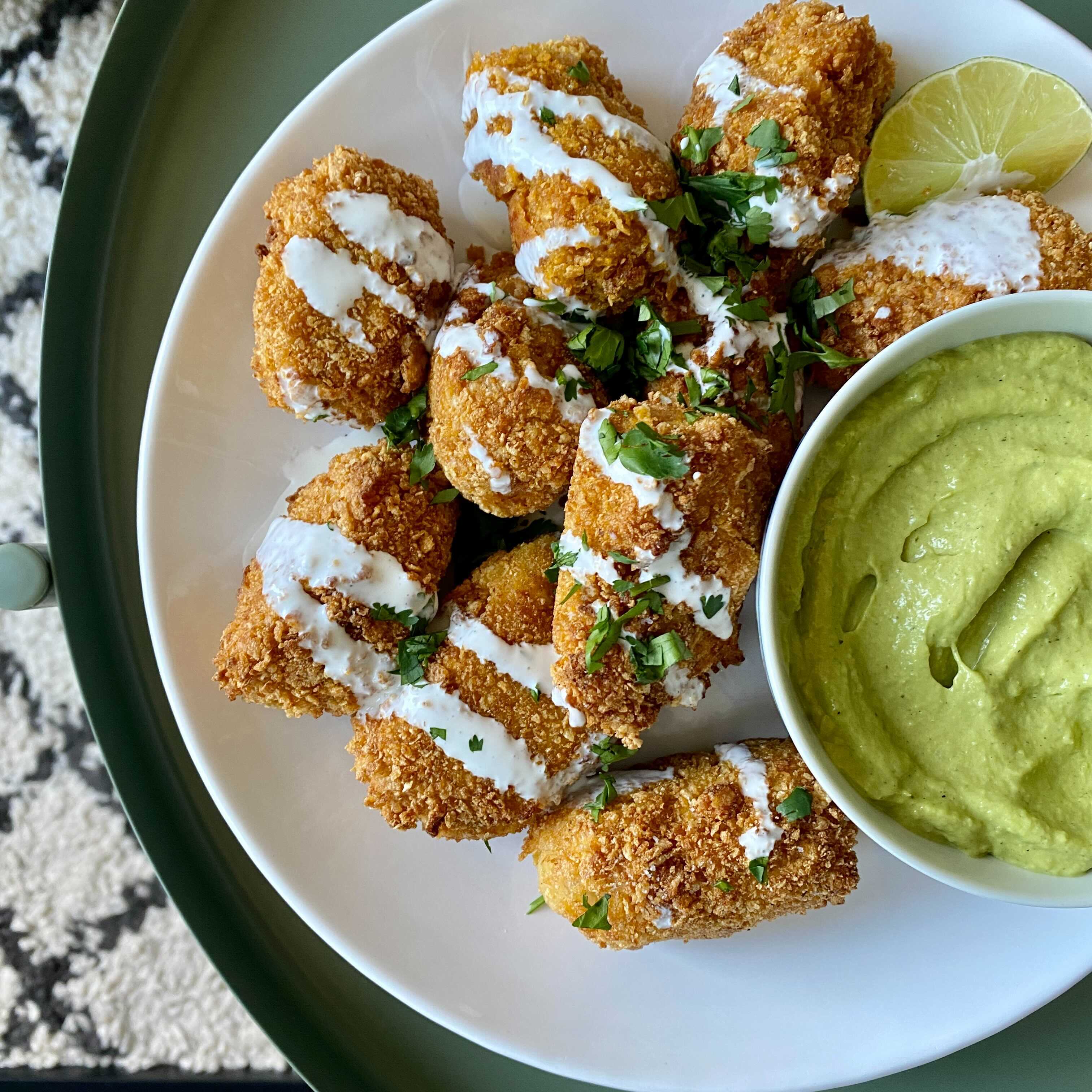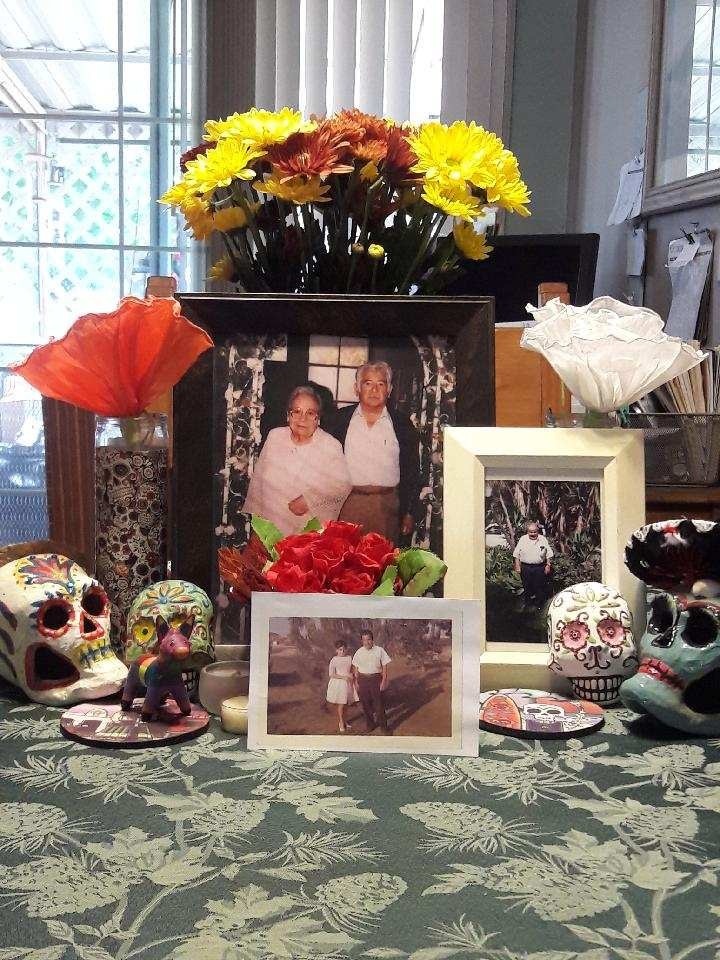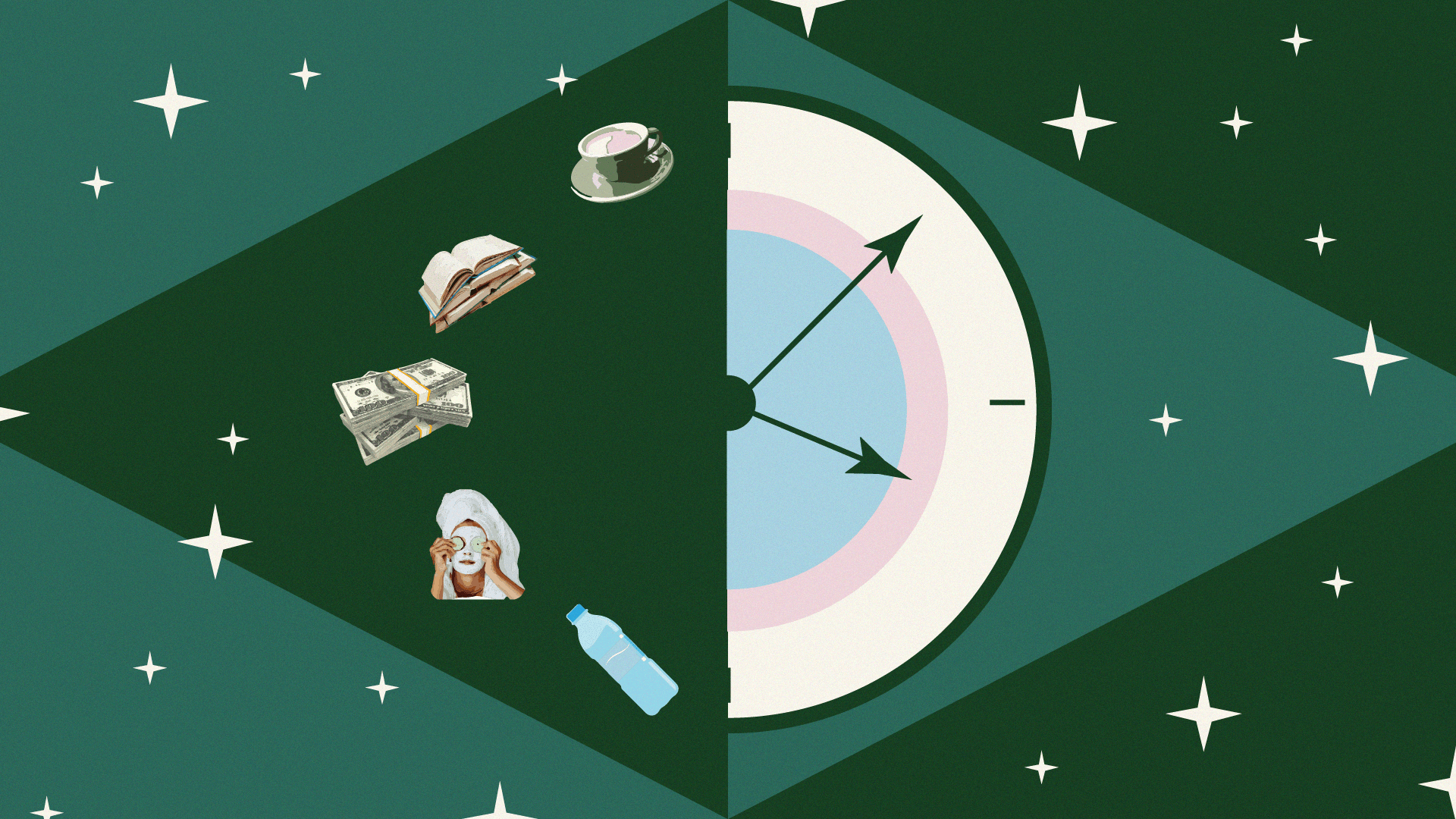
Historias de la Cocina: Croquetas de Papa (Potato Croquettes)
Recreating a recipe that died along with my great-grandmother.
As sugar skulls, papel picado, and other Día de Muertos decorations began to pop up in my neighborhood over the last few weeks, I started thinking about my relationship to the holiday and what I would do to celebrate this year. Día de Muertos is a two-day Latin American feast that honors loved ones who have passed away. It has a rich food history, with many people creating ofrendas, or altars, full of food that serves as an invitation for the dead to visit the realm of the living and enjoy tasty treats.
My family never truly celebrated Día de Muertos, aside from putting up a few photos of deceased family members and decorating them with cempasúchil (marigold) flowers. So, while I thought of writing about the traditional Día de Muertos food, pan de muerto, at first, I felt wrong laying claim to a dish that so many Mexican home cooks and bakers have made their whole lives, especially since my family doesn’t have a recipe for it (at least, not anymore).
But still, I wanted to commemorate the holiday to honor my great-grandparents, who celebrated the holiday every year when they were alive. My abuelo’s parents (great-grandma Rafaela and great-grandpa Alfonso) were both immigrants from Guadalajara, and my closest related line back to Mexico where so much of our family culture comes from. While I was talking to my mom about what Grandma Faela and Grandpa Fonso used to cook, I remembered a family conversation some years ago about croquetas de papa — or potato croquettes — that my great-grandmother used to make for holidays.

Photo of family Día de Muertos altar, sent by the author’s grandmother.
“She used to make them for Thanksgiving,” Mama told me. “But no one knows how to make them.” My abuela said that Mama had been asking her to make croquetas de papa for Thanksgiving for years, but no one had attempted to cook them since great-grandma Rafaela died and took the recipe with her. So, I decided I wanted to bring it back.
The only ingredients anyone in my family remembers from these croquetas are potatoes and corn flakes. The corn flakes threw me off. How did my great grandmother, an immigrant from Guadalajara, end up with a croquette recipe that was covered in corn flakes?
I know what you’re thinking: Croquetas are Spanish, right? Or French? That’s what I thought too, but a lot of internet research and Googling in (very broken) Spanish has shown me that it’s more complicated than that.
Let me bring you along for the ride down my croqueta search engine rabbit hole.
At first glance on English Google (we’ll get into Spanish Google later — be warned), croquettes originated in France, first popping up around 1691. Then, they eventually made their way to the Netherlands, where they’re called krokets, and Spain, where they’re called croquetas.
We all know the story of Spain’s colonization of Mexico by now (I’ve said it before and I’ll say it again — almost every modern Mexican food was impacted by colonization somehow.) At first, I wasn’t even sure if this was a Mexican dish that my great grandmother had been preparing all those years, since English Google made virtually no mention of Mexican croquetas. But the little potato fritters ended up in Mexico somehow, because when I started searching in Spanish, I found a YouTube video and an article detailing the recipe for tortitas de papa con amaranto, or potato fritters with amaranth: a native Mexican grain. A Spanish Google search showed that tortita is a synonym for croqueta, so I knew I was on the right track.
Amaranth is nutty and crunchy, and often popped to use as a crispy element in recipes. Connecting this Mexican recipe for tortitas de papa con amaranto to my great-grandmother’s croquetas was a little bit tricky because of the difference in ingredients. The methods for both seemed to be the same, so my guess is that she knew how to make potato fritters with amaranth, but couldn’t find popped amaranth in San Fernando to make them. Her substitution? Crushed corn flakes.
Once I figured out that Grandma Faela’s croquetas were a product of colonization, immigration, and ingredient translation, I got to work recreating and reimagining the recipe. My grandparents said that Grandma Faela’s croquetas were only potatoes and corn flakes, and that they were baked. I wanted to add more Mexican flavor to them, bring in a little heat from chiles, and some depth from chorizo. After baking them once, I thought that they could also use a more noticeable crunch to the exterior, so I opted to fry them instead, like taquitos.
My final recipe is obviously different from my great grandmother’s, but it still holds the essence of her Thanksgiving croquetas. I think this little exercise is a testament to what Día de Muertos is all about — bringing the living and the dead together. By taking the building blocks of my Grandma Faela’s croquetas and adding to them, I’m able to simultaneously keep her legacy alive and also continue to engage with her, even though she’s passed on from the physical world.
Croquetas de papa (Potato croquettes)
Yield: about 20 small croquetas
Time: 1 hour
Ingredients
- 2 ½ lbs. golden or russet potatoes, peeled and cut into one inch chunks.
- 1 tbsp. butter
- 1 tbsp. half and half
- ½ tbsp. salt, plus more to taste
- Black pepper, to taste
- ½ tsp. chile powder
- ⅔ cup cheese of choice, shredded or crumbled (queso fresco, cotija, or cheddar would all work well), optional
- ⅔ cup Mexican chorizo, cooked, optional
- 2 eggs
- ½ tsp. garlic powder to taste
- 4-5 tbsp. flour
- 4 cups corn flakes, crushed to a coarse powder
- 1 cup canola or vegetable oil, for frying
Preparation
Step 1
In a large pot, cover cut potatoes in cold water. Add ½ tbsp. salt to water. Allow water to come to a boil over medium-high heat. Once water is boiling, cook potatoes for 12-15 minutes until soft. Drain and return potatoes to the pot to cool.
Step 2
Once potatoes have cooled, mash them with a fork or masher until smooth. Add butter and 1 tbsp. half and half, stirring to combine.
Step 3
Add 1 egg yolk to the potato mixture, reserving the egg white. The mixture should be smooth, but thick and somewhat sticky. Season potato mixture with 2 tsp. salt (or more, if desired), ½ tsp. red chile powder, and black pepper to taste. Add in shredded cheese and/or cooked chorizo, if using.
Step 4
Line a baking sheet with parchment paper. Take 1 ½ heaping tablespoons of the potato mixture and roll into 2×1 inch football-shaped croquetas, placing onto the baking sheet. Create croquettes until all the potato mixture has been used. Chill in the freezer for 10 minutes.
Step 5
While the croquetas are chilling, place crushed corn flakes into a medium bowl. Season with garlic powder and salt. Whisk remaining egg with reserved egg white in another medium bowl. Place flour on a large plate.
Step 6
Working one at a time, dip croquetas into flour dredge, turning to coat lightly. Dip into egg mixture, then dredge in corn flake mixture, turning to coat. Transfer to a large plate.
Step 7
In a medium pan, heat oil to 350 degrees Fahrenheit. Working in batches of three, fry each croqueta for 15 seconds on each side (four sides) until the outside is golden brown and crisp all the way around. Place on a wire rack over a parchment lined baking sheet to cool. Serve with creamy avocado salsa and Mexican crema, if desired.


